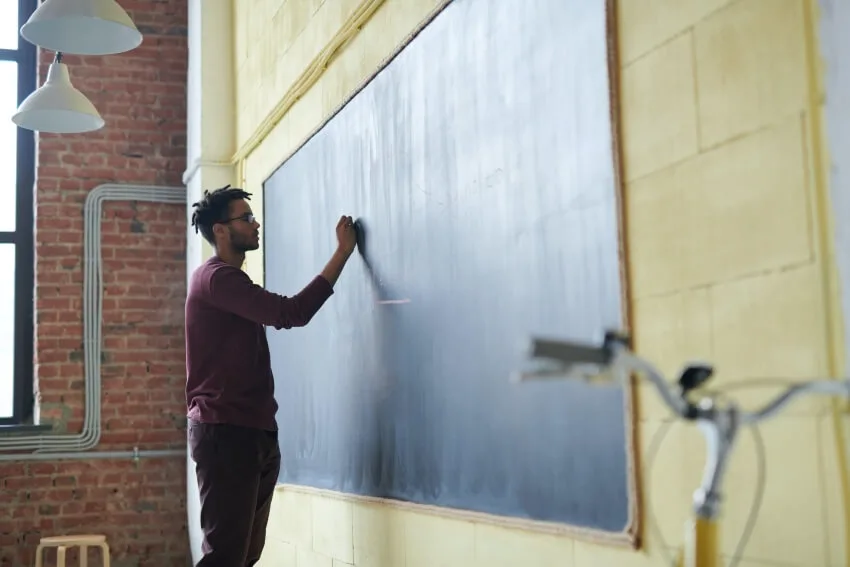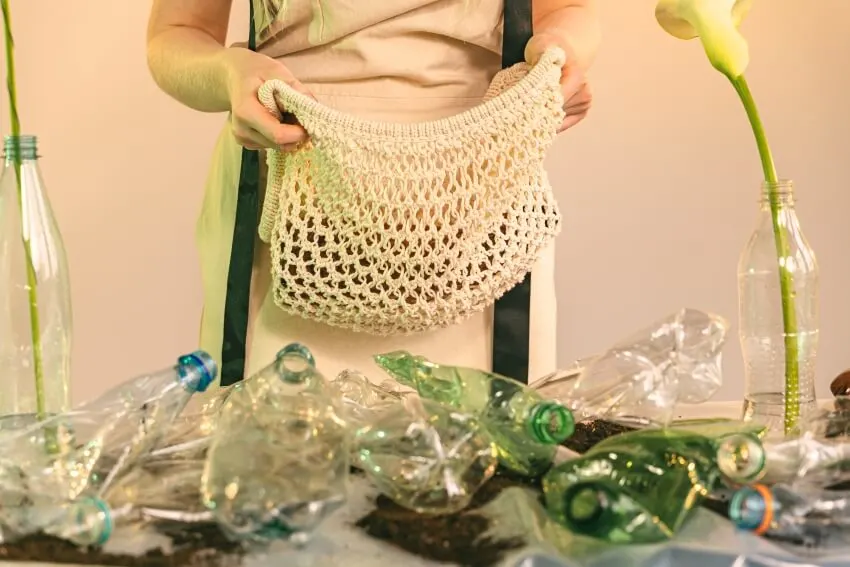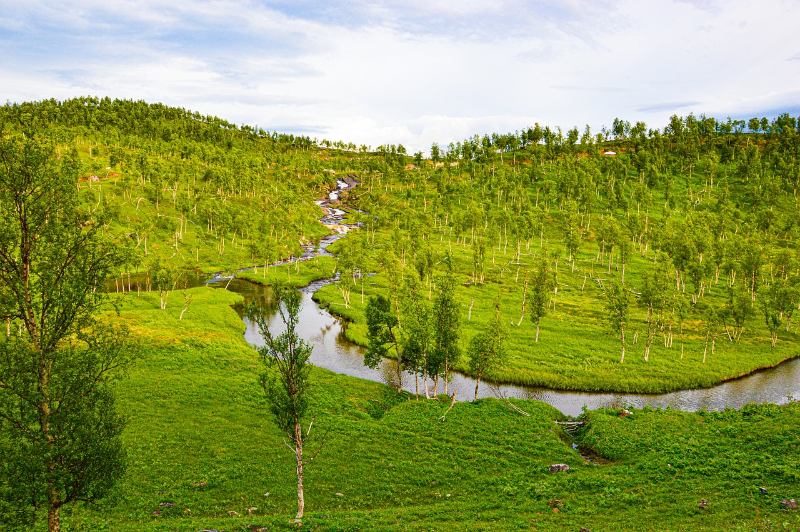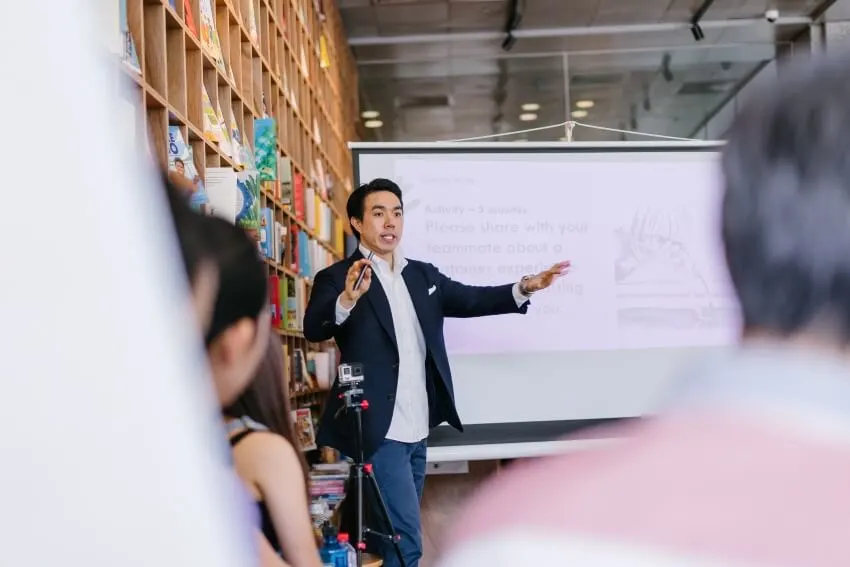The basic elements to understanding the environmental effects of climate change are awareness and mass education. To reach this goal, efforts must be made on a wide scale. We must consider all schools, educational institutions, offices, and home environments.
Today you can think of hundreds of ideas for green projects, but how many of these are doable?
- How many would bear the reward?
- What would the culture promote on the student level?
- How would it help reshape the future?
These are the questions you need to figure out before starting.
One great initiative would be to post every idea on all social media handles and platforms. That way, you can optimize the reach and ensure a consistent message.
Teaching Sustainability in Schools
Sustainability is a hot topic in education, and for a good reason. When we teach about sustainability, we’re not only learning about the world around us. We’re also building a more sustainable society and a more sustainable world.
Sustainability is all about resource use and consumption. It’s about making better choices to reduce waste and preserve resources for future generations.
Sustainability is the concept of ensuring that our planet’s natural resources are used responsibly for future generations. You can use many strategies to make sure your students understand this concept. The first step to teaching children about sustainability is to help them understand what it means. It’s not just about recycling. It’s about ensuring that our choices don’t negatively impact people or animals living on this earth long after we’re gone. It’s about thinking ahead so that future generations can access clean air, water, and food options. All things were taken for granted when most of us were growing up, but we may be endangered now if we don’t take action now!
To be a more sustainable person, you need to understand what sustainability means at both a global and an individual level. At the global level, sustainability is about understanding that your choices impact the planet and improving it. At an individual level, sustainability is about reducing your impact on the planet by making smart choices about how you live. This might involve changing habits, such as regularly recycling or riding bicycles instead of driving cars. It could also mean speaking up when they see others doing something harmful to the environment.
See Related: Best Sustainable Gifts for Your Eco-Friendly Friends
Benefits of Teaching Sustainability in School
There are several benefits of these green school projects:
- Learning about the climate invokes a sense of responsibility, critical thinking, and interdisciplinary (beyond the scope of studies) action.
- It involves unique modes of non-conventional teaching.
- Teaches the student to use all resources wisely and minimize wastage when stuck in challenging situations.
- By following the practical, lead-by-example method, teachers can promote a better learning environment. That can go beyond the scope of green schools.
- Polishes up the students’ problem-solving and decision-making skills.
Ideas for Teaching Sustainability in Schools

There could be dozens of ways to give your students a hands-on experience going green.
Green schools may do everything from recycling to power generation, gardening, encouraging students to become environmental advocates, and promoting a greener culture across all domains. It’s not about “going green” but teaching students how to live in this new environment.
There are hundreds of ‘fun and learn’ ways to equip them with the knowledge to save the planet. The best part is these activities will build into their personalities. To be a great leader, you must think outside the box. You need to develop inventive and unconventional ideas to help you run things around a school setting.
See Related: Different Types of Green Energy
Recycle

Learning how recycling works and which items can and cannot be recycled is a skill that can be learned by example. It’s easy to come up with activities or games involving recycling.
For starters, you can set up different bins for materials like glass, plastic, wood, etc. That would set the ground to help the students learn the difference between recyclable and non-recyclable materials.
Then, restrict the use of plastic all over the campus.
A step further up, you can visit factories and help learn how waste is recycled or managed on a mass scale.
Furthermore, here are some additional fun activities you can do at school:
- Group the students up for different projects. These could be about minimizing wastage at school or steps to recycle on an individual level.
- You can even give them a broad class project on finding and recycling materials at school, thus widening the scope of thinking.
- Set up collection boxes or points for bottle caps, glass bottles, paper, and other materials you can send out for easy recycling.
- Worm bins are a great idea. The worms are the best practical examples of decomposing wasted food.
Energy Conservation

Theoretically, you can tell your students the difference between renewable and non-renewable sources of energy. Then, taking it on a practical level, try solar power resources wherever you can, all over the school.
Minimize daylight energy consumption by initiating a daylight-saving program or using skylights in the classroom. Teach them to turn off electrical appliances and lights when not needed. You can do this by example and by including facts and figures in your session plan. Numbers are important in telling students how much their little act can do for the planet.
You can also:
- Teach them about CFCs and carbon emissions and ban any products that produce damaging emissions around campus.
- Replace existing light bulbs with energy-saver lights.
- Design and assign an annual class project to reduce energy consumption all over the school. Then, ask them to think of energy-efficient ways of doing things instead.
- Work towards shifting to outdoor solar classrooms.
See Related: These 13 Animals Have the Best Hearing in the World
Climate Change

Teaching climate change in schools can be difficult, but there are many ways to make it easier.
The first step is to teach students about the greenhouse effect and how it works. This will help them understand what causes climate change. This will make them more likely to listen to other information about it later.
Next, you should teach students what they can do to help stop climate change from happening. This will show them that they can have an impact even though they’re young. This will make them more likely to take action later on.
Finally, you should teach students about the different types of renewable energy sources. Hence, they know where they can go if they want to learn more about them. They can get involved with making sure more renewable energy options are available where they live.
See Related: Is It too Late to Stop Climate Change? Fast Facts to Know
Natural Resources

Natural resources are a crucial part of the Earth’s ecosystem. By teaching natural resources in school, students can learn how they are used and can be protected.
When teaching about natural resources, start with the basics. Make sure students know what natural resources are and how they’re used. This will make it easier to teach them about the importance of conservation and how to protect these resources for future generations.
When talking about how we use natural resources on Earth, give examples from your own life or from people you know. It’ll help them understand what it means when we talk about using resources such as water, food, and oil. They’ll be able to associate it with something familiar instead of abstract concepts like “energy” or “heat.”
Create an activity that forces students to think critically about using natural resources. Have them keep track of how much water they use each day or write down all the things they use daily that are made from plastic (like their lunchbox). Then ask them to consider if there are ways they could reduce their use of these products to conserve natural resources.
Explain why it’s important for people around the world to be aware of how much water or other resources they consume daily. Show the students some examples from around the world.
Critical Thinking

Critical thinking skills help create a sense of duty, creativity, and synergy in pupils. It opens the door for concepts and opinions and allows each student to have their voice once they realize they are heard.
As for sustainable teaching, when the students are made to work on a project, they learn how every little action has a global effect.
How resources are limited, and how our actions affect the planet and lead to all the climate issues we deal with today.
You can also do the following:
- Introduce them to historical practices and the steps taken by different countries for the global green environment.
- Ask them for opinions and ideas to develop strategies and plans to reduce global warming and direct all efforts towards a greener society.
- Start at the school level and then ask them to take it home!
- Share positive success stories from all around the world.
- Give them statistics; that ensure the efforts are not pointless and tasks are more achievable once you have the goals in place.
- Grow a green garden with your veggies and fruits at school. Start small scale, with a few easy-to-grow fruits first. Once the students see the benefits, they can take the act home.
Go Paperless

Here is a great strategy you can easily implement on campus; go paperless! It’s not just a change in lifestyle or a switch from contemporary learning to e-learning but also a great initiative for the environment.
Instead of buying books, get students to learn from e-books. Make your classes equipped with laptops or computers to ensure a paper-free environment.
You can also find many volunteers for arts and crafts to teach the students some great DIY projects. These can help at home and reduce industrial buying and build a sense of creativity and learning by employing easy-to-find resources at home.
There’s so much you can do using everyday objects like paper, cans, wire, etc. Check out Pinterest, and you’ll be amazed at the ideas.
Other Ideas to Teach a Sustainable Future

Apart from these, you can still do a lot to invoke thinking and interest among the students. Such as the following:
- Organize seminars and training by inviting renowned environmentalists to school. They can be local, or world thought leaders.
- Make up green societies or panels amongst student bodies.
- Check out the UN’s Sustainable Development Goals and make them part of the school curriculum.
- Learn about the different green schools and pave the way to make your school part of it.
- Set up biodiverse spaces or gardens, keeping frogs, lizards, butterflies, birds, and other species at school.
- Organize field trips to national parks and botanical gardens.
- Take up initiatives like celebrating Earth hour, bike riding and walks for a cause, school clean-up day, etc.
What are the benefits of sustainability or environmental education?
There are many benefits to sustainability or environmental education. First, it is a great way to teach students how to be resourceful. Students learn how to reuse and recycle items. This helps them save money and reduce their carbon footprint. They also learn how to be more aware of the environment around them. This, in turn, will help them understand more about nature and how it works.
Students can also learn about different cultures through sustainability or environmental education. This will help them become more open-minded about other countries’ practices and beliefs, which may not be like theirs. They will have more empathy for people from different backgrounds. It will make them better citizens in society.
Sustainability or environmental education is also great. It teaches students about themselves through self-reflection. Students will learn about their strengths and weaknesses. They will also realize their values and beliefs about the world around them. This will allow them to become better equipped when dealing with stressful situations later in life.
Education about sustainable resources informs us that a healthy community in which we live is dependent on our environmental conditions. Students learn about humanity’s current problems during sustainability education programs.
Natural disasters, pandemics, and the prospect of ecological refugees threaten our existence in new ways. The continual rise in population and pest effect are examples of challenges like climate change and ecosystem extinction that impact us in new ways.
Focus on environmental issues. This will assist individuals and communities in being proactive about the problems and not reactive.
Sustainability Education is related to teaching and learning how to:
- Conserve energy and water
- Make informed choices with the environment in mind.
- Reduce, reuse, and recycle
- Preserve ecosystems and habitats.
What is the best way to teach sustainability?

In recent years, sustainability education has gone mainstream throughout society. They happen in people’s homes and on boards. It also occurs in neighborhood gatherings and volunteer groups. Global teaching is better than just within school and college walls.
Businesses try to decrease environmental impact. Individuals find new locations for the first time after traveling when the action occurs.
A great way to teach sustainability is to encourage students to understand their ecological footprint and how it impacts climate change. If we want a sustainable future, it will be in the hands of young people.
We need to encourage students to focus on achieving sustainability.
What are the benefits of educators teaching sustainable resources?
Teaching about sustainable resources is empowering students. They will have the ability to make informed decisions that will have a positive impact on the environment. Students learn how to conserve resources, reduce waste and help preserve our planet’s ecosystems.
When schools become more environmentally sustainable, it can inspire others in the community to take action to do the same. As our societies and economies grow and develop, we use increasing amounts of natural resources and put more pressure on the environment in various ways.
In fact, by 2050, it is estimated that over 80% of people will live in urban environments rather than out in rural communities.
Much of this growth will be concentrated in slum-like informal settlements. This means that sustainable development will be even more important. We must ensure everyone can access housing, clean water, sanitation facilities, and energy supplies. These are essential for their well-being.
Educators can make a difference in the environment. They can ensure that children leave school with positive attitudes about the environment. They must be equipped with the necessary skills to take action and live more sustainably.
Integrating environmental education into curricula allows students to learn about the world.
Students can develop an understanding of the relationships between humans and their environment. They can understand how we have the potential to make a positive impact on the planet.
Sustainability education prepares students. They will be future leaders and responsible adults who understand the importance of caring for our planet.
Teaching children about sustainable resources is important. It gives them the knowledge and skills they need to make a difference for generations.
When planning environmental education lessons, it is important to remember the different ways students learn. Some students prefer hands-on activities, while others prefer to read or watch videos like middle school students.
Many sustainability resources are available online and in print, which can be used in the classroom.
Teachers can also draw on local resources to help teach about sustainability. For example, a field trip to a local water treatment plant can be very effective if a class studies water conservation.
Conclusion
Being an educator puts you in a great position to teach students and shape young minds.
Teaching involves giving future generations full control to become leaders and responsible adults. Sustainability issues continue to impact our natural environment. Making sure the future generations learn it is of utmost importance.
Remember that learning is a two-way street. So share your personal stories, but make sure to hear them.
You’ll be astounded at such energetic and fresh ideas of the youth. If given the right platform and opportunity to speak their minds, the youth can save the planet in new ways.
These ideas for teaching sustainability at school will help build knowledge and redirect efforts towards reducing fossil fuels, planting trees, and energy conservation.
FAQs
How do you teach sustainability in the classroom?
Teaching sustainability to children benefits their futures and the environment. Teaching them about sustainability in school is easier.
The Sustainability Curriculum Framework is a set of 24 modules that tell you how to be sustainable at school. The materials are for teachers, and they can be used in different grades as well as homes. There is a lot of high-quality content, and it’s needed for many reasons.
Active participation classes are a way to teach students how to care for the environment. They learn through hands-on activities, and they work together to complete tasks.
Teachers can also bring in people who are sustainability experts. This will help students learn more about specific topics related to sustainability. Examples are renewable energy sources or reducing waste.
Why is teaching sustainability important?
Teaching sustainability in schools is important. It sets an example for future generations. It helps them realize their impact on the environment. It also teaches them how to become protectors of nature rather than destroyers.
Sustainability has been an important topic in recent years, and we must teach it at a young age. Children are our future. We must ensure they know the importance of sustainability to make informed decisions as adults.
What is the best way to teach sustainability in schools?
The best way to teach sustainability in schools is by making it relevant and applicable. Students should be able to see the practicality of sustainability and how it applies to their lives. This can be done through hands-on learning activities.
How do you teach sustainability in the classroom?
Teaching sustainability in the classroom is the process of educating students on how to live in a way that promotes ecological, social, and economic well-being for current and future generations. It involves integrating sustainable practices and principles into the curriculum and classroom culture. This can include hands-on activities, discussions, and projects that encourage students to think critically about their impact on the environment and society, and how they can make positive changes.
Related Resources
